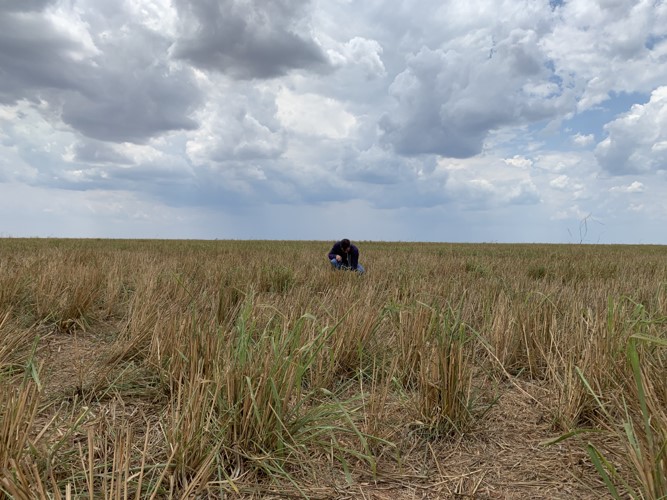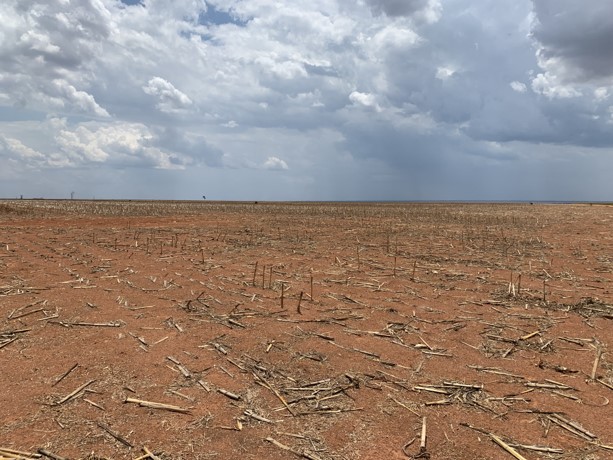The &Green Fund is striving for deforestation-free supply chains of the biggest agricultural commodities. Transforming entire supply chains is admittedly very complex. This begs the question: how?

On paper, the fund’s conceptual framework looks rather compelling. From its ‘theory of change’ and ‘investment philosophy’ to its ‘investment process’ mapped neatly in an A4 flow chart.
The &Green Fund has set out a well-defined investment strategy to achieve its objectives. It is implemented by Sail Ventures BV that leads a team of sixteen full-time professionals based in the Hague, Brazil and Singapore.
That may seem like a small team, but the fund’s chairman Nanno Kleiterp stresses how well connected the fund is. “We build on our relationships with local and international organisations such as the World Wide Fund for Nature (WWF), The Nature Conservancy (TNC) and IDH,” Kleiterp says.
To begin with, the fund is selective about the countries it can invest in. Not without reason, because how can you protect forests if there are no strong national laws in place to support their protection?
&Green can only invest in approved jurisdictions, which are countries with “progressive forest and/or peatland protection strategies & policies”. So far, these are: Brazil (two states), Colombia, Ecuador, Gabon, Indonesia and Liberia.
“The companies that &Green finances need to be part of a network with local businesses and NGOs. This is much more the case in Brazil, Colombia and Peru that have real targets on deforestation,” Kleiterp says.
“We’re very busy looking at Africa, Liberia, but Africa is even more complicated (than other continents, ed). There are fewer large companies or at least medium-sized,” Kleiterp notes.
“Our average financing is $15mn and that can only be one-fifth of the entire project funding. The total project is on average $80-100mn and this is additional to the company. So, the company has to be much bigger.”
ESG screening process
Next to complying with all applicable laws and regulations, &Green screens on ESG (environmental, social and governance) safeguards. The projects have to meet the IFC Performance Standards on Environmental and Social Sustainability and implement an Environmental and Social Action Plan.
The company has to express an organisational commitment to ‘no deforestation’, ‘no development of peatlands’ and ‘no exploitation’, submit a long-term Landscape Protection Plan (LPP), and obtain the ‘free, prior and informed consent’ of all local communities in the area of the project.

The fund makes all its information public, including the plans it makes with its investees. It wants to be fully transparent. It is also a way of showing who is responsible for what. There are many stakeholders involved when it comes to forest conservation and restoration. And not all of them are obviously within the control of the investor.
Kleiterp makes it clear that it’s not &Green but the company it invests in that is responsible for meeting agreed targets on protecting and/or restoring forests in their area and how smallholder farmers are benefiting.
Landscape Protection Plan
As part of their investment proposal, companies have to submit a Landscape Protection Plan (LPP) which is a “sustainable long-term land use and management plan” including quantitative environmental and social impact goals.
It also has to indicate clearly in which areas of the landscape the company has direct influence and where indirectly, and will be updated annually.
&Green monitors the progress and makes sure it’s independently verified. With Global Forest Watch, it monitors deforestation by using satellites. “All the plans are published on our website. Everyone can follow it,” Kleiterp notes.
“If a company doesn’t meet its targets and is not making the effort, we can sanction them and it can be a reason for defaulting on the loan,” Kleiterp says.
Impact measurement
It cannot be expected that every company has an impact management framework in place. So, &Green has a special budget for that, a technical assistance (TA) budget in development jargon.
This means that a company can get a grant to partially fund the costs for hiring consultants that can help them in reaching the standards of &Green’s Environmental & Social Management System.
Measuring how its investments have reduced deforestation and/or restored forests can be monitored using satellites, but determining how much its investments have contributed to improved livelihoods of smallholder farmers is much harder.
It’s also in the early stages of defining how it can measure how its investments indirectly contribute to greenhouse gas emissions avoided, which is an important benchmark. Kleiterp speaks of a “learning journey” when it comes to designing its impact measurement.
“It looks simple, but how do you link what has been preserved to your financing or how smallholders are benefiting? It is a work in progress.”





